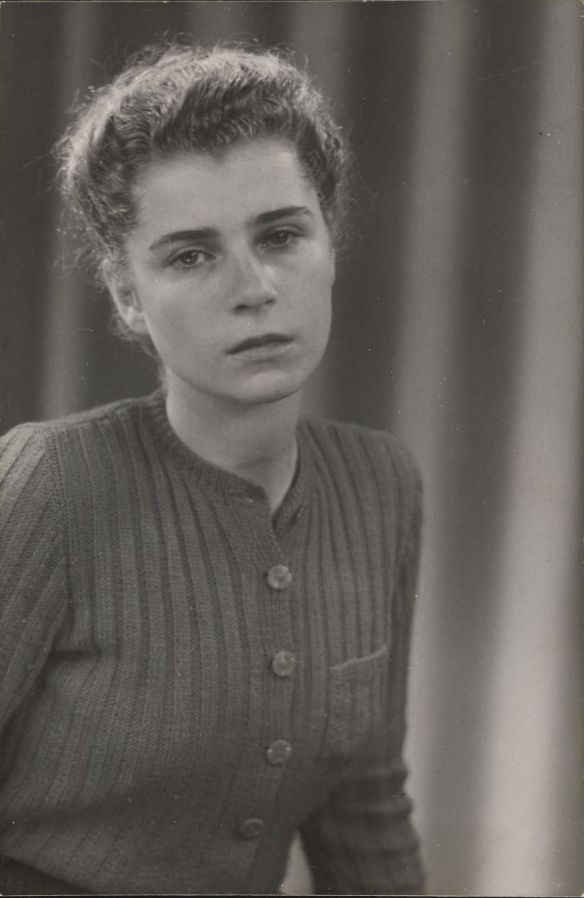Barbara Ledermann
Barbara Ledermann was friends with Margot Frank.
Barbara Ledermann came to the Netherlands in 1933 with her parents and younger sister Susanne. Her mother was a sister of the artist Paul Citroen (1896-1983).[1]
Like Margot, she attended the Jeker School. Margot was a great help to her with her schoolwork.[1] She had ballet lessons from Hans Snoek, the later founder of the Scapino Ballet.[1] In 1941, a photographer took photos of Barbara and Joyce van der Veen during their ballet exercises.[2]
When the deportations started in July 1942, Barbara was exempted because of connections with the Jewish Council. Nevertheless, her parents had her vaccinated against cholera and typhus, just to be sure.[3]
Later, with the help of friends, she managed to change her identity.[1] She got through the years of occupation under the name Barbara Waarts. In this false identity, the first names of the parents and the date and place of birth were correct. On 5 July 1944 she also received a new identity card under the name Waarts. After the liberation her registration card in the Population Register was labelled 'False'.[4]
Her going into hiding was against the will of her parents. When she lived under the pseudonym Waarts for eight months, she went to visit her parents. Because the neighbours knew her, she put a Jewish star on her clothes. She was at home one evening and night. The next morning, 20 June 1943, the raid took place during which the last large group of Jews in the neighbourhood was picked up. Barbara removed her star and left the house unharmed. Her father, mother and sister Susanne were taken away that day.[5]
In June 1947, Otto Frank sent her a copy of The Secret Annex with an accompanying note. She thanked him on 10 September 1947, writing that she had now succeeded in accepting life as others have accepted religion: without understanding it.[6]
In October 1947, Barbara, who was the only survivor from her family, left for the United States. She married physicist Martin Rodbell and had four children with him.
Barbara Ledermann's story forms one of the personalised tour brochures of the United States Holocaust Memorial Museum in Washington.[7]
Source personal data.[8] Addresses: Berlin; Zandvoort; Noorder Amstellaan 37-III, Amsterdam; Johannes Vermeerstraat 77 boven; Reijnier Vinkeleskade 61 huis (June 1943-1945 under the false identity of Barbara Waarts); Koningslaan 14hs (November 1945); New York (October 1947).[9]
Footnotes
- a, b, c, d Anne Frank Stichting (AFS), Getuigenarchief Rodbell - Ledermann: Interview met Barbara Rodbell - Ledermann door Wouter van der Sluis, Amsterdam, 10 november 1993.
- ^ AFS, Getuigenarchief Van der Veen: Interview met Joyce van der Veen door Dineke Stam, Los Angeles, 27 maart 1997.
- ^ Catherine Yekimov, Inge R, Lizze Vrijsen (vertaling), Letters from the Ledermanns, San Bernardino, CA: Afori Publishing, 2016, p. 8-11.
- ^ Stadsarchief Amsterdam (SAA), DIenst Bevolkingsregister, Archiefkaarten (toegangsnummer 30238): Archiefkaart Barbara Waarts, met naoorlogse aantekening “Valsch”.
- ^ AFS, Getuigenverhalen I: Transcriptie interview Barbara Rodwell – Ledermann door David de Jongh en Teresien da Silva, 1 en 2 oktober 2008, p. 33 – 34, tijdcode 00:22:32 – 00:26:39.
- ^ AFS, Getuigenarchief Rodbell - Ledermann: Brief Otto Frank aan Barbara Ledermann, juni 1947 en antwoord van Barbara, 9 oktober 1947.
- ^ United States Holocaust Memorial Museum, Washington DC, “Identification card” #4191, Barbara Ledermann.
- ^ Joods Monument: Barbara Ledermann
- ^ SAA, Dienst Bevolkingsregister, Archiefkaarten (toegangsnummer 30238): Archiefkaart F.A. Ledermann (1889).
